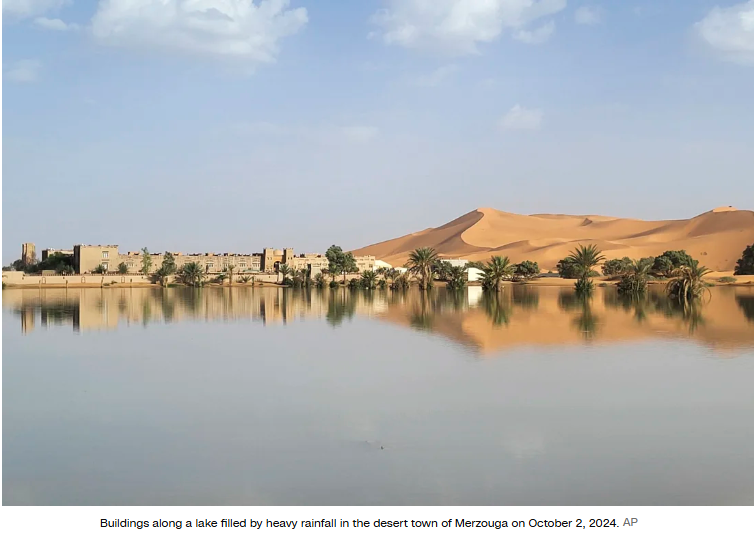By Joke Kujenya
IN THE Sahara Desert, where annual rainfall barely reaches two inches, a massive downpour hit for the first time in 50 years—an event never seen in such a short span.
For two days in early September, rainstorms swept across regions like Errachidia and Merzouga, depositing several inches of rain.
Residents of Errachidia, a city that typically experiences less than one inch of rain in an entire month, saw flash floods tear through the streets, causing chaos and devastation.
The desert city recorded 3 inches of rain in just two days, exceeding four times its monthly average and providing more than half of its annual rainfall.
In a rare and unexpected event, the vast Sahara Desert, known for its arid landscape, was inundated by floodwaters following torrential rains.
Southeastern Morocco, where the desert meets the Atlas Mountains, bore the brunt of the extreme weather, leaving local communities grappling with the aftermath.
This unprecedented weather shift has intensified concerns over the growing impacts of climate change on fragile ecosystems.
Houssine Youabeb from Morocco’s Meteorology Agency confirmed that such heavy rainfall had not occurred in over three decades.
“It’s something we’ve never seen in our lifetimes,” remarked Youabeb, reflecting the shock felt by many in the region.
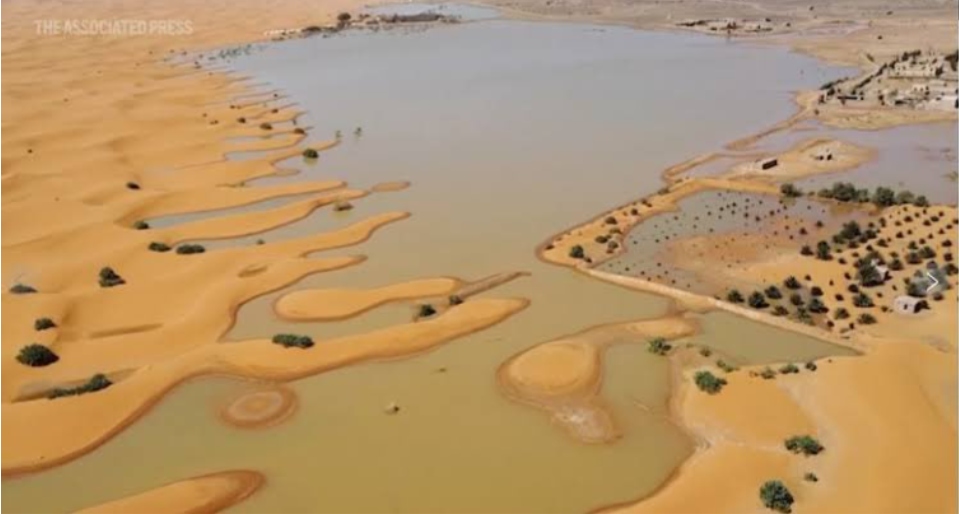
Floods’ Transformed Landscape
In Merzouga, famous for its majestic sand dunes and a key destination for desert tourism, the landscape transformed as rainstorms eroded the dunes, creating sudden lakes and flooding the once-dry valleys.
“We have never seen anything like this,” said 56-year-old Mustapha, a camel guide. “These floods have not only washed away parts of the desert but have also taken lives.”
The loss of life has been deeply felt. Reports indicate that at least 24 people have died in southeastern Morocco due to the flash floods.
Entire villages, many composed of mud-brick homes, were submerged under water, leaving thousands homeless and in need of aid.
The torrential waters destroyed homes, bridges, and roads, isolating communities and hindering rescue efforts.
The village of Tafilalet, once a symbol of resilience in the face of harsh desert conditions, now lies partially underwater, with families scrambling to recover whatever remains of their belongings.
Livelihoods have been severely affected. Many locals rely on agriculture and animal herding, both of which have been disrupted by the floods.
“All my goats were swept away by the floodwaters,” lamented Ahmed, a 45-year-old herder. “This desert is tough, but we have learned to survive in it.
“Now, with these rains, we are facing something we never thought possible.”
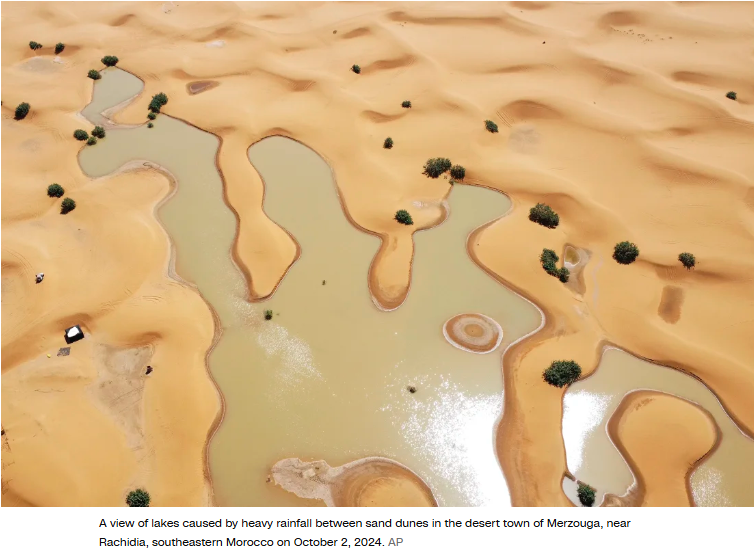
Climate Change as Culprit
Environmental experts point to climate change as a major factor behind the Sahara’s unpredictable weather patterns.
Karsten Haustein, a Climate Scientist from Leipzig University, explained that rising global temperatures are creating conditions that allow for more moisture to be pulled into typically dry regions like the Sahara.
“As temperatures in the Sahara rise, we are seeing more moisture being drawn in from the tropics. When that moisture meets the intense heat of the desert, it results in these sudden and extreme downpours,” he said.
Moroccan Meteorologist Houssine Youabeb, who has been monitoring weather patterns in the region for over three decades, called this event “the most significant rainfall in living memory.”
“We typically see rain once or twice a year, but not like this,” Youabeb added. “This storm brought more than three inches of rain to some areas, which is equivalent to their annual average.”
Satellite images released by NASA vividly depict the scale of the flooding.
Once barren, dry areas of the Sahara are now transformed into vast stretches of water.
Iriqui National Park, typically a dry lakebed, is now an expansive body of water.
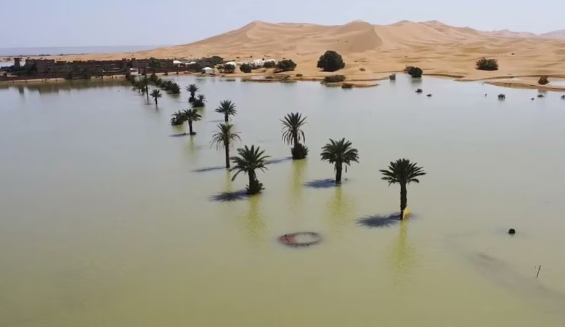
The park, a haven for wildlife, has experienced an explosion of plant growth, as seeds that lay dormant in the dry soil for years have germinated in the wet conditions.
However, the temporary beauty of this new landscape hides a tragic reality for those living in the affected areas.
Entire communities face months, if not years, of recovery. Local authorities and international aid organizations have rushed to provide food, shelter, and medical assistance to those displaced.
Efforts to rebuild are underway, but the scars of the floods remain.
Effects on Neighbouring Countries
Neighbouring countries have not been immune to the impact of such extreme weather.
In Niger, Chad, and Sudan, relentless rains have destroyed infrastructure, displaced millions, and resulted in hundreds of deaths.
Chad alone has seen over 1.5 million people affected by floods in 2024, as rains wiped out crops and livelihoods.
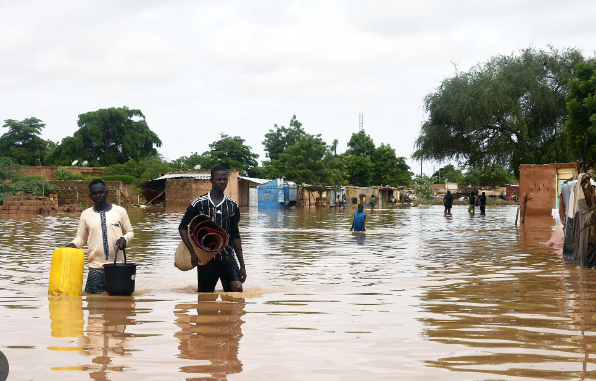
Close to Home
Even Nigeria’s typically dry northern regions have faced deadly flooding this year, with over 220 lives lost.
The human cost of these events is staggering, and experts warn that climate change is amplifying the severity and frequency of such disasters.
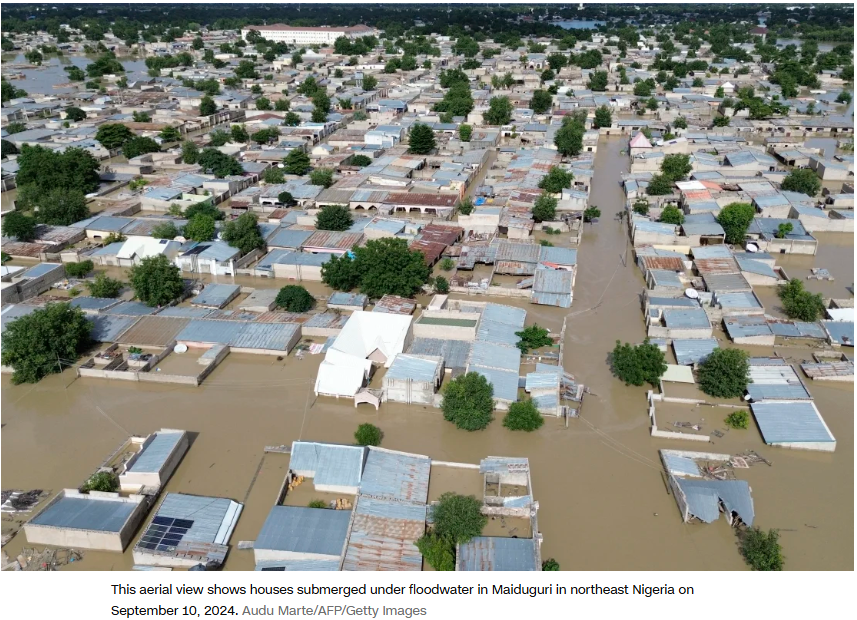
For residents like Ahmed, a 45-year-old farmer from a small village near Merzouga, the flooding was both a shock and a tragedy.
His home, built from traditional mud bricks, could not withstand the force of the floodwaters. “Our village has never seen anything like this.
“We thought the desert was unchanging, but now, it’s like living on the edge of a storm,” he said.
Despite the hardship, there is resilience in these communities.
Families keep working together to rebuild, and the newfound lakes have attracted attention from scientists and tourists.
Houssine Youabeb adds that the underlying threat of climate change remains. As temperatures continue to rise and weather patterns shift, extreme events like this could become a regular part of life in the Sahara, further destabilizing an already vulnerable region.
As things stand, the people of the Sahara are on the front lines of climate change, facing its most destructive consequences with limited resources.
The recent flooding, while remarkable in its scale, offers a sobering glimpse into a future where the desert’s arid reputation might be increasingly challenged by violent, unpredictable storms, the meteorologist expert notes.
He also said the recent flooding in the Sahara may be a sign of things to come, as global climate models predict increasing variability in weather patterns across North Africa.
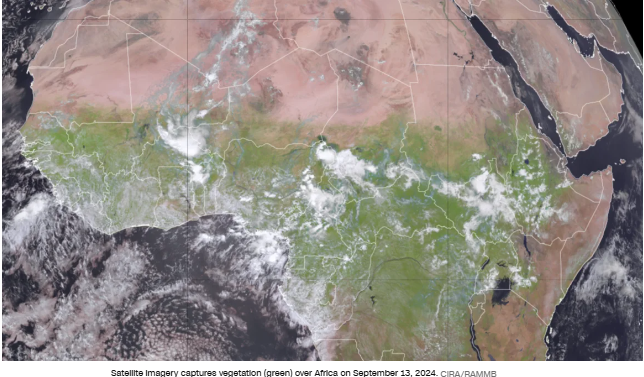
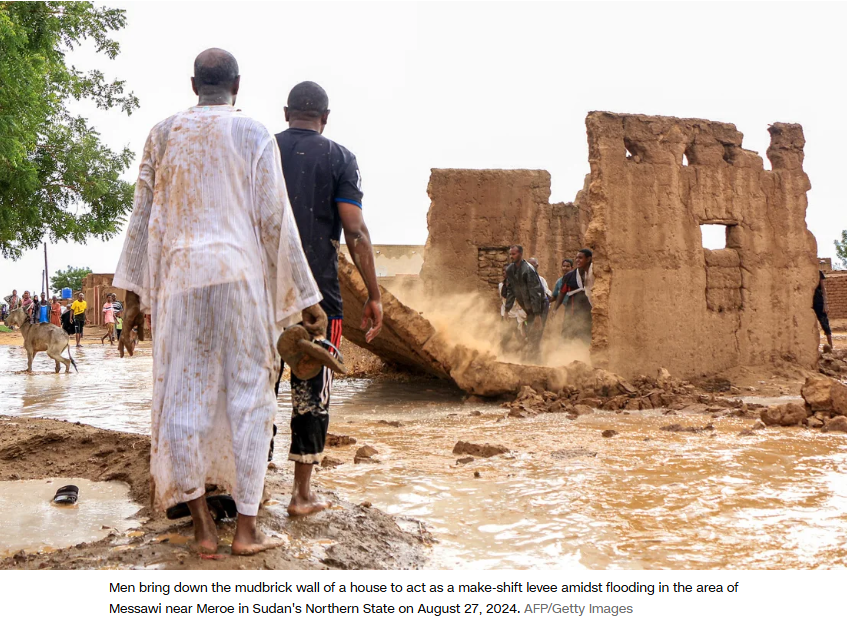
Rising temperatures combined with shifting atmospheric conditions could lead to more frequent and intense rainstorms, as well as prolonged droughts.
For the people of the Sahara, whose lives are intricately tied to the desert, adapting to this new reality poses a daunting challenge, Youabeb cautions.
Similarly, he notes that as the floodwaters recede, the long-term impacts of this unprecedented weather event will continue to unfold.
From the loss of lives and livelihoods to the sudden transformation of landscapes, the Sahara and its people are living through changes that threaten to redefine their way of life, Youabeb affirms.



